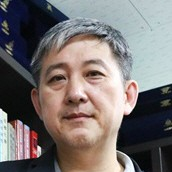MOF-Based Nanostructured Materials: Synthesis and Applications
A special issue of Nanomaterials (ISSN 2079-4991). This special issue belongs to the section "Synthesis, Interfaces and Nanostructures".
Deadline for manuscript submissions: closed (16 April 2021) | Viewed by 10990
Special Issue Editors
Interests: environmental & biomedical monitoring; air quality & environmental engineering; material engineering; coordination polymers; metal-organic frameworks (MOFs)
Special Issues, Collections and Topics in MDPI journals
Interests: physicochemical properties of nanostructured materials; photo-, sono-, thermo- and electromagnetic catalysis; mechanochemistry; sonophotochemistry; interfacial phenomena in catalysis; detoxification of toxic vapors; biomass valorization; selective oxidation processes; air and water remediation; materials chemistry; MOFs and metal-oxide nanocomposites; activated carbons; graphite/graphite oxide; graphitic carbon nitride polymers; semiconductor nanocatalysts; carbon quantum dots
Special Issues, Collections and Topics in MDPI journals
Interests: adsorption processes for environmental protection; porous hybrid materials; tailored surface modification; nanomaterials and nanocomposites; silica- and carbon-based functional materials
Special Issues, Collections and Topics in MDPI journals
Special Issue Information
Dear Colleagues,
Metal-Organic Frameworks, also known as porous coordination polymers (PCPs) or porous coordination networks (PCNs), are among the various classes of materials that gained a global interest, predominately due to their unique textural features (e.g., significantly high surface area and porosity). Over the past decade, the number of the known frameworks/structures, theoretically or synthesized, have increased drastically, exceeding nowadays 75,000 in number (based on the Cambridge Structural Database), since a plethora of combinations of the metals, as single ions or as clusters, with the possible organic moieties for linkers exist. MOFs are recognized as promising candidates for various applications, especially due to the tunable chemistry upon functionalization or creation of defects. Although MOFs suffer from several drawbacks like the lack of stability (e.g., upon exposure to humidity, lack of reusability, and difficulties for a real-life application), a number of approaches have been devised to overcome such flaws. The formation of functionalized nanostructured MOFs, nanocomposites based on MOFs, or the dispersion of the MOF-phase on substances not only allow to bypass their drawbacks but also to enhance their functionality and performances. The utilization of the frameworks at one specific application (e.g., sensor) and then to an alternative one (such as adsorbent with or without modification) is also of a highly demanding topic to be explored for a sustainable future.
The main aim of this Special Issue, “MOF-based nanostructured materials: Synthesis and Applications” is to collect original and innovative reports (original research, communications, or review articles) presenting the very latest trends and developments on the synthesis, characterization, and applications of MOF-based nanomaterials and nanocomposites. In case of “Synthesis,” comprehensive evaluation of the materials, especially with respect to the detailed characterization of textural parameters based on comparative analysis with other materials is recommended. Further, in case of “Application.” the scope for this Special Issue is unlimited, although environmental-friendly approaches such as adsorption and catalysis are of the foremost interest.
Prof. Dr. Ki-Hyun Kim
Dr. Dimitrios Giannakoudakis
Dr. Mariusz Barczak
Guest Editors
Manuscript Submission Information
Manuscripts should be submitted online at www.mdpi.com by registering and logging in to this website. Once you are registered, click here to go to the submission form. Manuscripts can be submitted until the deadline. All submissions that pass pre-check are peer-reviewed. Accepted papers will be published continuously in the journal (as soon as accepted) and will be listed together on the special issue website. Research articles, review articles as well as short communications are invited. For planned papers, a title and short abstract (about 100 words) can be sent to the Editorial Office for announcement on this website.
Submitted manuscripts should not have been published previously, nor be under consideration for publication elsewhere (except conference proceedings papers). All manuscripts are thoroughly refereed through a single-blind peer-review process. A guide for authors and other relevant information for submission of manuscripts is available on the Instructions for Authors page. Nanomaterials is an international peer-reviewed open access semimonthly journal published by MDPI.
Please visit the Instructions for Authors page before submitting a manuscript. The Article Processing Charge (APC) for publication in this open access journal is 2900 CHF (Swiss Francs). Submitted papers should be well formatted and use good English. Authors may use MDPI's English editing service prior to publication or during author revisions.
Keywords
- nanostructured metal organic frameworks
- MOF based nanocomposites
- functionalization of MOFs
- nano-engineering supports with MOFs
- tuning the textural features of MOFs








